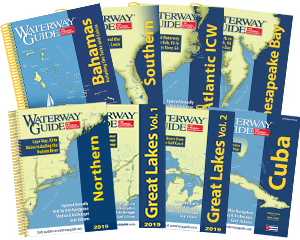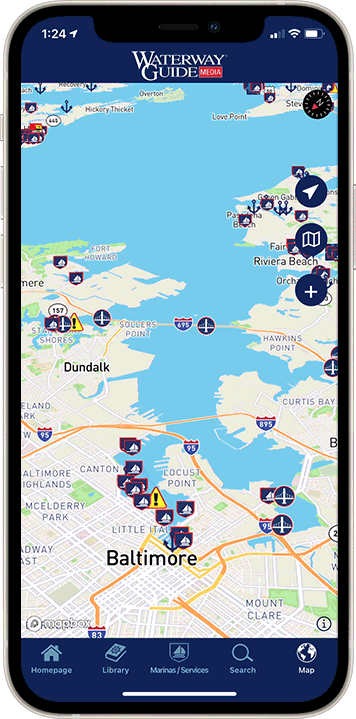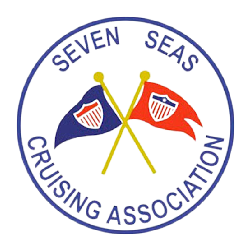Explore Our Latest News & Articles
The islands of The Bahamas are high on many cruiser's bucket list and deservedly so. But visiting this nation of islands and cays (pronounced "keys") requires a little more work than domestic destinations. Firstly, The Bahamas covers an enormous sea area. Within the country are many distinctly different cruising destinations, each requiring some research and planning. Use this guide as a baseline for your research.

Many boaters enjoy leaving South Florida and cruising the Abacos first. You can then return home after a few days or weeks, or you can travel farther south by way of Eleuthera, the Exumas and beyond. The "Bahamas Loop" is a loosely defined route that takes you through the Abacos, Eleuthera, the Exumas and back to Florida via Bimini. Still others choose to only visit the Exumas. The choice is yours. The only sure thing is that you can spend years exploring the islands and still have plenty to see. Sample itinerary are found throughout this guide to spur some ideas.
Once you've decided where you want to go, you'll need to sit down and look very carefully at how to get there. All trips to The Bahamas and back require two open-water passages across the Gulf Stream, one of the single most powerful forces on earth. On the day of your crossing, the Stream can be like a millpond or it can be a raging maelstrom. We recommend you embark on a day when it's like a millpond. Researching the weather and knowing when to go, when to stay and when to wave off is essential.

You'll also want to prepare your boat. Of course, she will need to be a well-founded vessel capable of a blue water passage. Truth be told, many less-than-seaworthy vessels have made the trip sucessfully with careful planning. Fast powerboats in the 20- to 30-foot range regularly cross between Florida and the Islands by playing their weather cards carefully. Should the weather turn, of course, the odds can turn against you quickly.
Besides proper size and design, you'll want to ensure your boat is up-to-date on all maintenance. Mechanics are few and far between and if something breaks down on an Out Island, you might be waiting for parts for a long while. It's always advisable to do as much as possible ahead of time and carry as many spare parts as you can. If you think it might break and you need it, consider taking a spare.
The following is a list of things you will need before crossing the Gulf Stream and starting your island adventure.
- Have current passports for everyone aboard. Check that they aren't going to expire during your trip. (We suggest 6 months before expiry but any date beyond your cruising permit expiry is acceptable.)
- Keep current vessel documentation or state registration on board (and check the expiration date.)
- Make sure to have insurance for your vessel, including in the appropriate cruising area. Note: Many U.S. policies do not cover The Bahamas or the Turks and Caicos without an additional binder.
- Have medical insurance for yourselves. Note that U.S. insurance vary significantly depending on the provider and you may need to acquire supplemental international coverage.
- Get emergency medical evacuation insurance (e.g. DAN Boater).
- Speak to your doctor about a long-term refill for the length of your trip for prescription medications.
- Contact your bank and let them know your international travel plans to avoid automatic fraud declines. Double-check your bank and credit cards to find out what sort of fees they might charge on international transactions.
- If you are traveling with a pet, apply for an import permit, receive the paperwork and then visit a vet before departing the U.S. The process can take a while so start early.
- Stock up on cash. ATMs are few and far between in the Out Islands (but most marinas and fuel docks do take Visa or MasterCard). A credit card fee is charged by most businesses.
- Make a plan for getting cellular service and internet access while in the islands. If using your existing number and account, make sure your phone is compatible with the BTC network and check your international roaming rates.
- Carry current paper and electronic charts.
- If you don't already have it, consider downloading a tablet or smartphone GPS chartplotter app to use as a backup to your onboard unit. Try to get an app with a different brand of chart so that you can compare differences. We recommend using Aqua Map.
- Purchase a yellow "Q" flag as well as a Bahamian courtesy flag (and one for the Turks and Caicos if you plan to go that far).
- Stock up your pantry and freezer. See the lists on the following pages for hard-to-find and handy items to have on board.
- Make sure your boat maintenance is up-to-date. In particular, make sure your batteries, bilge pumps and engine are in top-notch order.
- Get as many spare parts as you can afford and store. At a minimum, have on hand oil and coolant, several filters (every kind), impellers and belts. Take more fuel filters than you think you'll need. Consider things like a spare starter, alternator, exhaust elbows and gasket sets, depending on the age and condition of your motor. If it might break, take it with you! Don't limit spare parts to the engine. Take a spare water pump, bilge pump, light bulbs, fuses, circuit breakers, toilet parts, etc.
- Brush up on your navigation skills and read everything you can about boating in the islands.
- Ensure your vessel's ground tackle is appropriate for the islands.
- Check those bilge pumps one more time to make sure they're working!
When choosing where to venture in the islands, preparedness and ability, along with seaworthiness of the vessel, are the critical concerns. In addition, time constraints, fuel and water capacities and airport availability may define your limits. With these factors in mind, the direction in which to point your bow most definitely depends upon your starting point.
Ready to explore the stunning beauty of the Bahamas with confidence? Order your print guide and subscribe to the digital version today, and set sail on a journey of discovery and adventure in the Bahamas!












